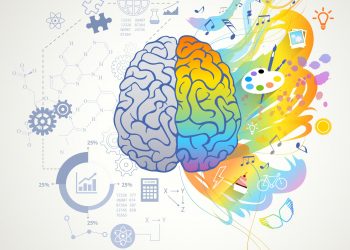No products in the cart.
NLP: Awaken the Giant Within
NLP distils the idea why we are all the sum of our conditioning, as also beliefs.
The idea of using neuro-linguistic programming (NLP), as a non-invasive, adjuvant tool to detect and deal directly with what individuals do unconsciously first emerged over fifty years ago. It was expounded to be a mode that ‘detailed’ how our brain and body work naturally — in consonance with what changes our mind-body system was making automatically.
The ‘neuro’ element of NLP denotes that all behavior leads to sensory stimuli – sight, hearing, taste, smell, touch and feeling.
NLP requires us to use our ability to get in touch with the senses and be able to ‘read’ thought processes in others through eye movements, subtle changes in breathing, skin tone, and preferred language choice. More than that, it involves changing internal conflicts, negative thoughts, and behaviour patterns, for more positive states. ‘Linguistic’ reflects how we all use language to formulate our thoughts to communicate with others our opinion, emotions, and needs. ‘Programming’ illuminates how we arrange our behaviours to harvest results.
There is more to NLP than what meets the mind. To highlight a common example – why is it that you can speak quite easily and freely with some people, but not with others? The answer is simple. It is all a matter of your statement, or its essential style. It is also a question of knowing your style, so that you can build the necessary bridges for more effective interaction.
Practice Works
There is one major area where NLP scores its finest triumph – it helps its user to achieve better communication skills, based on careful observation and listening skills, provided one puts in a good deal of practice. The point also is NLP is an effective way of ordering one’s thoughts, feelings, behaviour and, most importantly, language. It mirrors an image of its own; the shape of things to come in human resource management and development. It typifies answering effectually to other people, understanding and valuing their views, opinions, sensitivities and sensibilities. Its goal is ‘fixated’ – to give individuals several choices in their catalogue of response.
How is this achieved? Simple. On the basis of our thoughts, feelings, and attitudes. So much so, certain belief systems which are negative, unhelpful, or hostile, and deeply entrenched, can be changed to become more ‘friendly’ with the kind of reality you want to experience. Most NLP practitioners believe that NLP teaching is based on a logical foundation – that the unconscious mind is far more influential than the conscious mind, and that all of us have, within us, the means to attain excellence.
It goes without saying that what you say, and do, influences the other person. What they do also influences you. This underscores a primal fact – that NLP involves a clear examination of the entire system of feedback and response – behavioural and biological – occurring in all interactions between a human being and oneself, other human beings and also the environment.
All of us have internal ‘feelings’ and a sensory system responsible for processing a set of characteristics about our immediate environment. According to NLP, these features will be distinctive to every individual. NLP also underlines that these unique elements control our behaviour. Nothing, of course, is fixed. However, the best part with NLP is, you can, as it were, ‘mine’ from within an experience, or feeling, have a good look at it, replace it with a more suitable response, or one with which you are more comfortable and return this new response to your own personal system of principles and conviction.
Practice makes perfect, although many of the techniques used in NLP would need professional support, or training. Yet, a few of them – and the most important – can be mastered, for the higher purposes of our own existence. This is because NLP behaviour is not just external, observable behaviour, like walking, but also activity in any sphere – from eye movement to hearing, or internal visualization.
Mind-Body Connect
Is it not an interesting phenomenon that our mind can be deceived time and again, even when it can distinguish between what is imagined and what is real? For example, you have just jumped out of the way of a speeding car seconds before it might have mowed you down. In such an event, you would probably experience the symptoms of mild clinical shock. So, when you recount the story later, similar symptoms may recur. This is because your mind triggers a physical reaction without ‘differentiating’ between real and imagined events.
The way you respond to imagined, or recollected, events can be changed, from a detrimental to a constructive experience, through NLP. All you need to do is dwell on all the things that went wrong – and just allow the self-fulfilling prophecy syndrome, or negative images, to come into action. Maybe you could also wait for the same bad things to happen the next time. Not that they won’t happen. But, if only you swap ‘bad’ memories with optimistic feelings, or outlines, the self-fulfilling foresight will work for, rather than against, you. The outcome, or presentation, will be all the things you wanted it to be.
Outcome is an indispensable word in NLP, yes. It is a specific, and positive, result – one that is finely honed than just a goal. It encompasses words that describe what you see, hear, or feel. For example, if only you recall a time when a presentation on the job – or an identical event – went off well for you, NLP will encourage you to recall the positive event. All the same, you will have to bring optimistic vibes to flourish any time you need to replicate the experience – one that turns potential failure into repeatable success.
It goes without saying that NLP is a complex theory based on the fact that each of us is unique, yet composed of similar physiological, biological, emotional, and spiritual parts that are intrinsically linked. You know it, don’t you? That the body and mind and the conscious and subconscious form a wholeness that is distinct to each individual. As NLP pioneers and specialists Joseph O’Connor and Ian McDermott explain, “The principles of NLP are called presuppositions because you presuppose them to be true and then act. It is not claimed that they are true, or universal. However, if you act as if they were true, you will find your life and interactions with others become more effective, interesting, satisfying and enriching.’’
NLP is based on the knowledge of thought processes and chemical reactions that take place in the brain. It applies such knowledge in a practical way to aid self-development, improve relationships and enrich communication. This is not all. It enables individuals to manage their thinking processes in a much better way too. It addresses beliefs and values, as well as behaviour, no less – in health and illness.
That the method has helped people with a range of illnesses, such as allergies, weight-related problems, eating disorders and diabetes, among others, is well documented – even if sceptics relate to the whole foray as ‘placebo effect.’
NLP deals primarily with what people do outside of their conscious awareness – especially while dealing with health-related issues. It, of course, utilizes the patterns of how people do things successfully. The inference is obvious – NLP practitioners endeavour to change every thinking pattern that might contribute to one’s illness or prevent recovery. This is one major reason why the technique employs the natural pattern of how the brain works. It achieves results safely – and, in the best manner possible.
“‘We are all the sum of our conditioning’, is one of the foremost tenets of NLP”

“The way you respond to imagined, or recollected, events can be changed, from a detrimental to a constructive experience, through NLP”
The Long & Short of NLP
Matching, mirroring, pacing and leading. You’ll have to aim to subtly emulate the other person’s style, and soon you’ll perceive you are ‘on their wavelength.’ You’d also match the other person’s breathing pattern, to establish rapport. But the ‘change’ in your behaviour has to be restrained, not forced.
Study gestures and mirror the movements. Your movements have to be minimal. Pacing, as such, encompasses recognizing, acknowledging, and respecting the state, or feelings of others. Do not match anxieties; always pace them to show that you understand and care about their position. Once you’ve paced them, and they begin to pace you, only then can you ‘lead.’ So, follow your lead. The rest is easy – to establish rapport.
Eye-accessing cues. We all use visuals. Because the eyes communicate a language of their own. Not always easy, though. You will have to observe each individual carefully and match their eye movements with other cues, such as choice of vocabulary. For example, right-handed ‘visual’ people will look up to their right for imagined images; to their left for remembered images; or, look straight ahead in a defocused manner for visual images to be remembered. In like manner, left-handed ‘auditory’ people will keep their eyes in level to their right for constructed sounds; and, their left for remembered sounds. Right-brained subjects also focus on aesthetics, feeling and internal emotions; they look through to their left for internal dialogue. You’ve to ‘catch’ them in their own ‘preserve’ to make things work.
Calibration. This is the key to successful communication. It holds the ability to recognize, or read, how a person is feeling, and responding to your communication by assessing their non-verbal signals. It will tell you when you are going off-course or need to change track to succeed with a particular individual. But there are no hard and fast rules. Because every person is unique; practice the ‘art’ consistently, and you won’t be disappointed.
‘We are all the sum of our conditioning’, is one of the foremost tenets of NLP. This only means that as our brain cells developed, they sought sensory stimulation. This is also precisely the reason why we all use auditory and/or visual information. Research suggests that people who favour the ‘same sense’ find it all the more comfortable to communicate together. Remember the commonplace axiom? They ‘see eye-to-eye,’ or ‘feel comfortable with each other.’ You have got to recognize it. This is all there is to it.
NLP ‘catches,’ as it were, the language aspect, style, usage of unspecified nouns, verbs, comparisons, judgments, generalisations, pre-suppositions, cause and effect, not to mention intuition to ‘read’ a person — to the extent possible. It also uses pointers and anchorage — to ‘anchor’ a positive feeling, such as confidence, by mentally ‘living’ a desired state. It could use touch, pressing the finger and thumb together too, where the feeling is most intense — to fire the ‘anchor.’ The feeling of confidence will recur.
Nothing is fail-safe, yes. So also, NLP. Yet, the possibilities are expansive. As Walt Whitman, the renowned American poet, essayist, and humanist, put it so succinctly, “Keep your face always toward the sunshine, and shadows will fall behind you.”
So, there you are. NLP is a handy technique to replace pessimistic thoughts, anxieties, doubts, worries, or previous negative outcomes, including health problems, with how you would like to respond. If only you practice it like a steadfast Test batsman, who persistently hones their skills, its ‘anchored’ feelings would become a reality for you – for your own good – not just in academics, business, and career, but also life and relationships.











